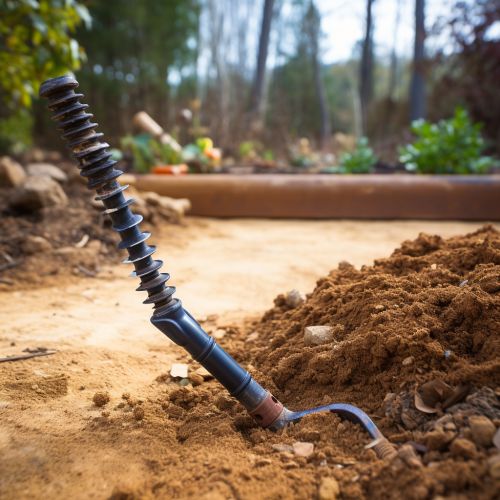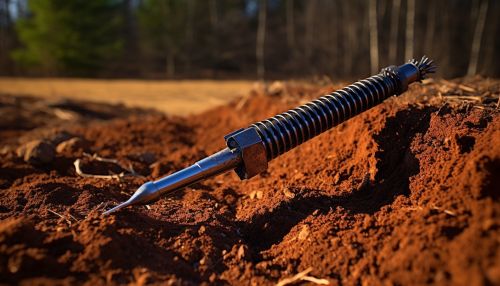Soil Auger
Introduction
A soil auger is a drilling device, or drill bit, used for making holes in the ground or taking soil samples. It is a specialized tool, typically used in the fields of soil science, geology, agriculture, and environmental science.


Design and Function
The design of a soil auger is relatively simple, yet highly effective. The main components include a handle, a shaft, and a drilling head. The handle is typically made of a sturdy material such as steel or aluminium, and is designed to provide the user with a firm grip. The shaft is a long, cylindrical rod that connects the handle to the drilling head. The drilling head, or bit, is the part of the auger that actually penetrates the soil. It is usually spiral or helical in shape, allowing it to effectively cut into the soil and remove it from the hole as it is drilled.
The function of a soil auger is to create holes in the ground or to extract soil samples. This is achieved by rotating the auger into the ground, which causes the drilling head to cut into the soil. As the auger is rotated, the soil is lifted out of the hole by the spiral design of the drilling head. This process can be repeated until the desired depth is reached.
Types of Soil Augers
There are several types of soil augers, each designed for a specific type of soil or drilling task. These include:
- Bucket Augers: These are typically used in softer soils. The design includes a hollow, bucket-like drilling head that collects the soil as it is drilled.
- Clay Augers: These are designed for use in heavy clay soils. They have a narrower, more pointed drilling head that is better able to cut through the dense material.
- Sand Augers: These are used in sandy or loose soils. The design includes a wider, flatter drilling head that prevents the soil from slipping back into the hole.
- Rock Augers: These are designed for drilling into hard rock or other hard subsurface materials. They typically have a very strong, sharp drilling head, often fitted with tungsten carbide teeth.
Applications
Soil augers have a wide range of applications, particularly in the fields of soil science, geology, agriculture, and environmental science. Some of the most common uses include:
- Soil Sampling: Soil augers are often used to collect soil samples for analysis. This can provide valuable information about the soil's composition, nutrient content, and other properties.
- Planting: In agriculture, soil augers can be used to drill holes for planting seeds or seedlings. This can be particularly useful in large-scale farming operations.
- Construction: Soil augers can also be used in construction, particularly for drilling holes for foundations or for installing fence posts.
- Geological Surveys: In geology, soil augers can be used to drill holes for the installation of monitoring equipment, or to collect samples of subsurface materials.
